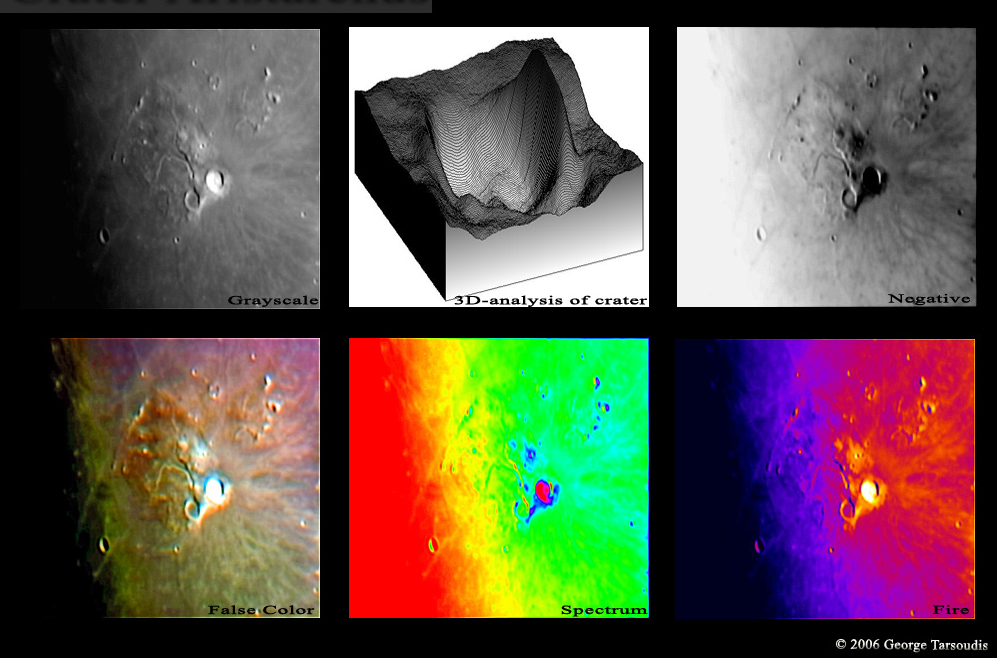
image by George Tarsoudis
The Aristarchus region is a familiar target for observers and imagers - it is a small area with a great concentration of diverse features. But I have seen lots of images - some superb - and additional ones typically don’t offer anything new. George, who has a playful approach to the Moon, here presents an exploration of the Aristarchus region that encourages us to look at it freshly. His original image has been made a negative, color enhanced, and color mapped in two different ways. The negative image shows more clearly than the original that the Aristarchus Plateau is domed up at its edges, and the false color image documents that it has a different hue than the variagated nearby maria. The spectrum image is a coarse mapping of intensity, and the fire image shows something but I am not sure what! Finally, the 3-D image remaps the brightness of pixels of the Aristarchus crater as height in an arbitrary X-Y-Z axis plot. You can see the small central peak, which is real, and a slope of the crater rim which I was unaware of. George did the 3-D mapping and some of the other transformations using a powerful free image processing program called ImageJ. I was impressed with this Java image processing program a number of years ago, and it has improved greatly since then. It has an active band of supporters who have contributed hundreds of plugins to allow many types and analysis and enhancements. Check it out.
Technical Details:
8 July. 2006. LXD-75 8″ SCT + Toucam Pro + UV/IR cutoff filter. Digitial image processing with ImageJ and final in Photoshop.
Related Links:
Rükl plate 18
George’s website
Yesterday's LPOD: Craters and Papers
Tomorrow's LPOD: Inside Gassendi
COMMENTS?
Register, Log in, and join in the comments.



